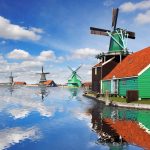
Said to be named by Portuguese explorers after a river that doesn’t actually exist, Rio de Janeiro has no access to navigable rivers to facilitate the low-cost movement of its manufactured and agricultural goods for internal distribution and export. Instead, Brazilian products must be painstakingly maneuvered through the harsh interior of tropical Brazil to the nearest viable port.
Rio de Janeiro may be a port, but it isn’t a very good one. The city – like most of southeastern Brazil’s coastal cities – is perched at the edge of an uneven plateau. That plateau sports steep cliffs that make Rio’s cityscape breathtaking, but those same cliffs split the city off from the interior.
Facing a (literal) uphill battle to take goods to market, Brazil in general and Rio in specific faces a multitude of geographic barriers to development. This is even before considering that to Rio’s north, Brazilians face unforgiving tropical (aka malaria-inducing) climates above the 22nd Parallel.
Even within Rio de Janeiro, geography is cruel. The sugarloaf-shaped hills that dot the downward-sloping inland portions of the city are jam-packed with Rio’s impoverished favelas. These shanty towns overlook the prosperous, metropolitan portions of Guanabara Bay, including the glorious Copacabana.



